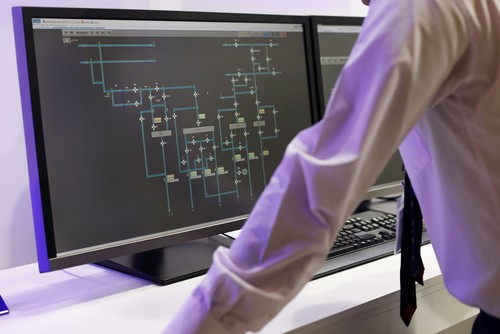What is a SCADA System and How Does it Work?
Industrial automation is becoming increasingly popular in fields such as manufacturing, pharmaceutical, power plants, transportation, oil and gas, water control and more. The machinery in these industries is highly complex and diverse. That’s where the SCADA system comes into play.
SCADA (Supervisory Control and Data Acquisition) is a system that monitors and controls field devices at remote sites. The system consolidates and centralizes the monitoring of all operations. It includes dashboards that allow you to control each HMI (Human Machine Interface) in the same place. SCADA helps maintain efficiency by collecting and processing data in real-time, allowing you to make smart, quick decisions.

Functions and Components of a SCADA System
AfconSWS SCADA systems have four main functions and four main components. Learning about the details of these functions and components will help explain how SCADA effectively increases productivity.
The 4 main functions of a SCADA system:
-
Data collection
SCADA is able to analyze signal strength, temperature, and channel quality by translating them into measurements that are less complicated. The system is able to do this instantaneously, so quick decisions can be made.
-
Data communication
After data is acquired, SCADA transmits it to a master where it will be shown to system operators.
-
Data presentation
System operators are able to see the data on an interface so that they can make decisions in response. This is how SCADA allows you to control machinery in a simple way.
-
Control
After a decision is made in response to the data, the SCADA system makes operational or configuration changes. This is usually done using RTUs, which will be explained further below.

The 4 main components of a SCADA system:
-
Inputs
Inputs, where the SCADA functions start, directly interact with the remote sites. They are made up of sensors and control relays that function to collect the data.
-
Remote Telemetry Units (RTUs)
After inputs collect the data, RTUs report it to you. RTUs are small electronic units that are in various places in the field. RTUs gather the data from sensors in their locations and distribute commands to control relays.
-
Human Machine Interfaces (HMIs)
HMI software is the component of SCADA that allows operators to view the data and control the system. Information from RTUs is displayed on the interface in an easily comprehensible way, allowing operators to respond immediately.
-
Communications network
The SCADA system needs a network in order to connect to remote sites. Currently, the most widely used communications network is Ethernet.
Taking Your SCADA To The Next Level
AfconSWS Software Solutions offers three PulseTM solutions that will give you the decision support tools to grow your business. Our products (Pulse ProfessionalTM, Pulse EnterpriseTM, and Pulse CloudTM) are designed to give you insight into the enterprise and operational managers. These SCADA services will help make your business more productive and effective.
Recent posts

What is a Building Management System?

















